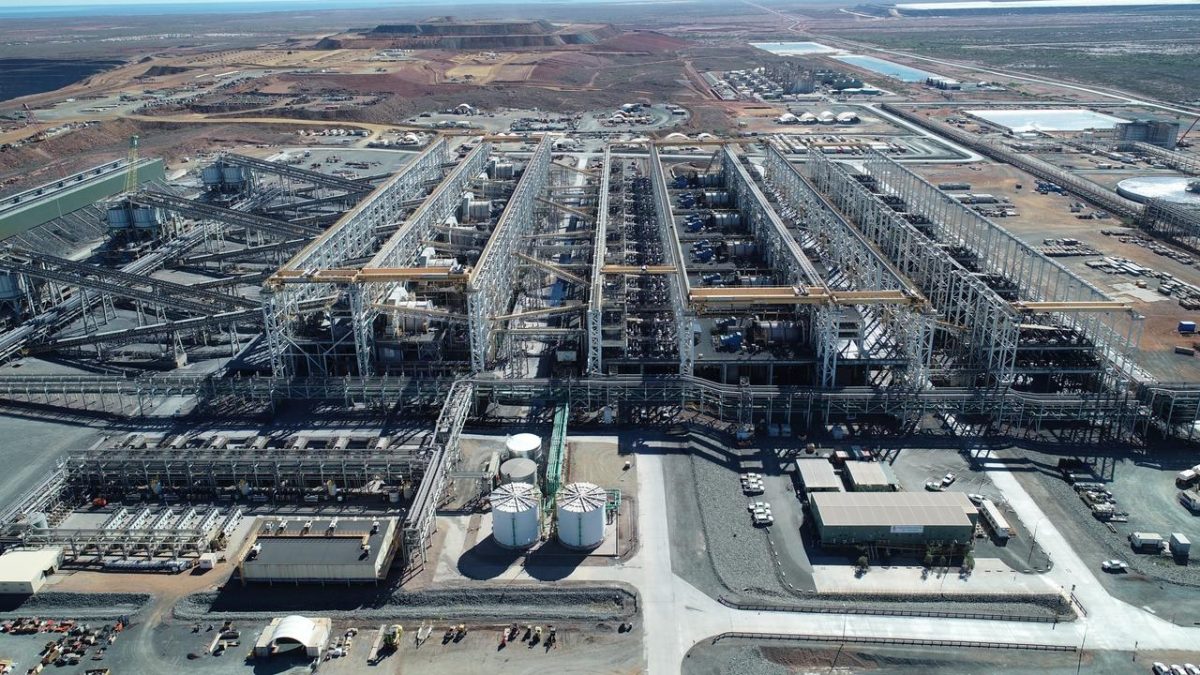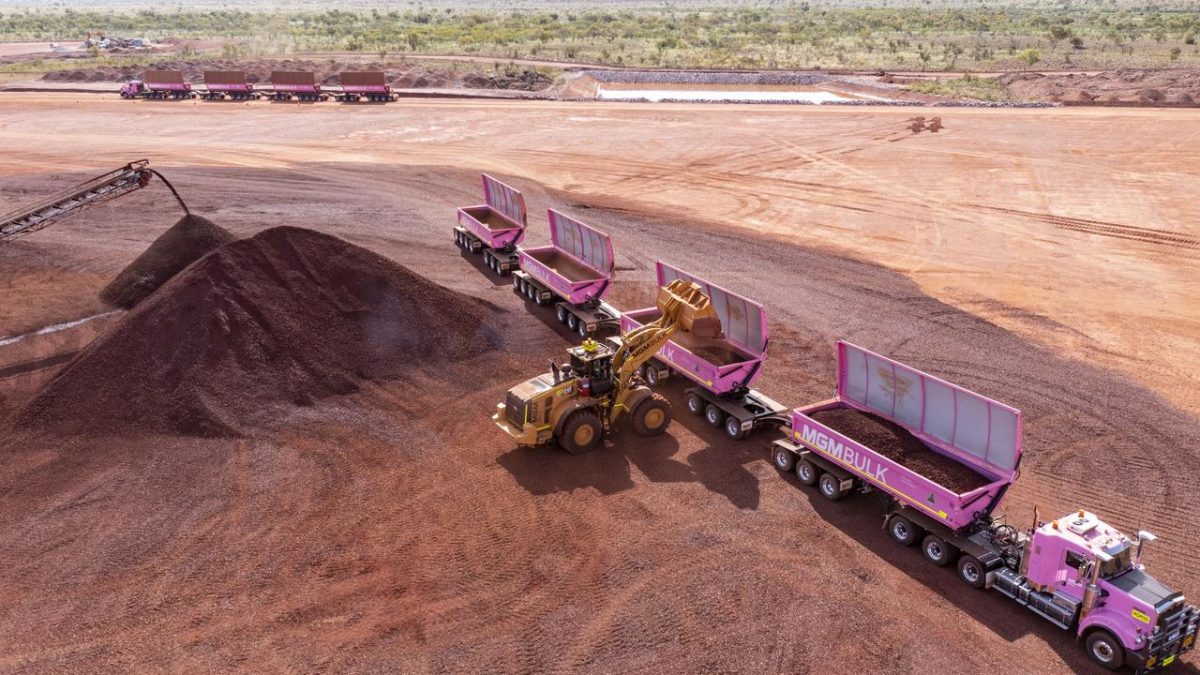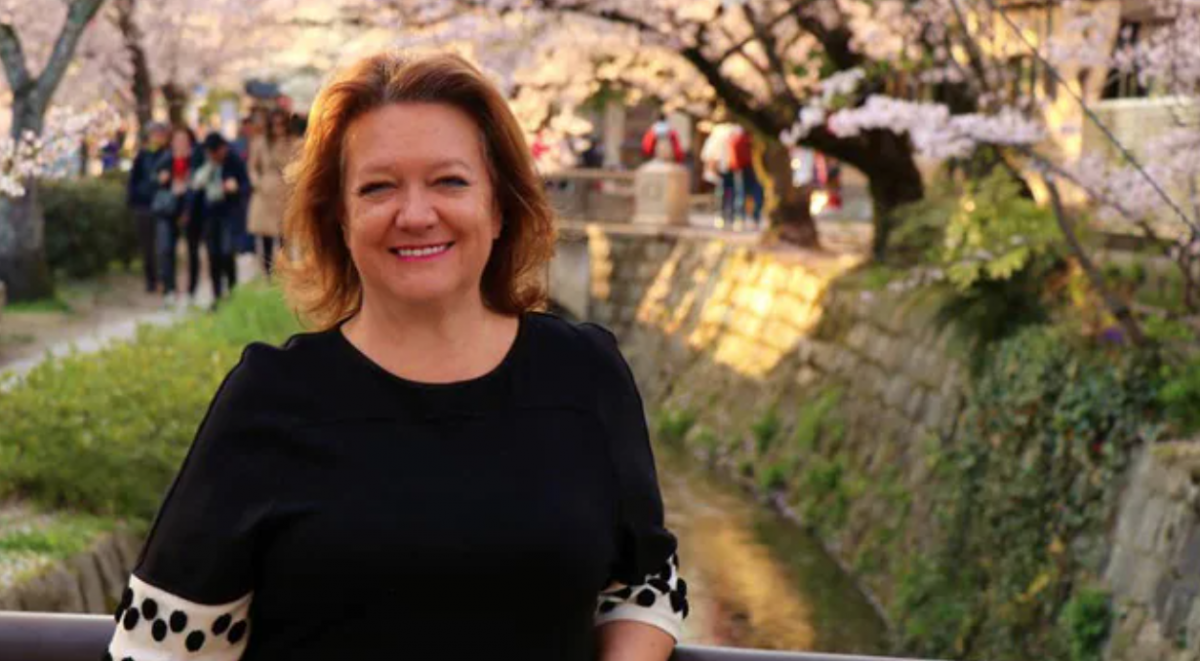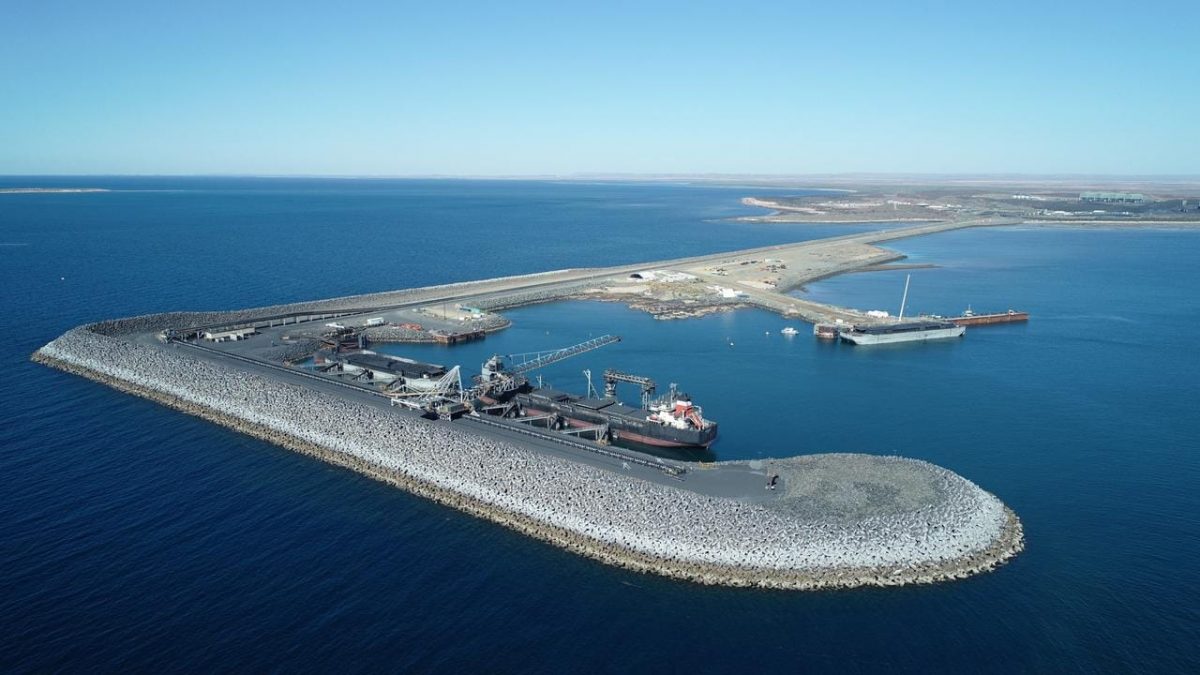MAGNETITE BACK IN FAVOUR WITH RINEHART | GINA RINEHART INTEREST SUGGESTS MAGNETITE IRON ORE IS NO BOOM-TIME FOLLY
Article by Nick Evans courtesy of the Australian.


CITIC’s Sino Iron magnetite project in Pilbara, which cost more than $12bn to build and is only now turning profit, almost a decade on from its first shipment of magnetite concentrate.
Once written off as a boom-time folly, the dream of tapping the vast reserves of magnetite iron ore in WA has seemingly been revived as a fresh wave of new and old projects make their way onto the agenda.
In the last month, Gina Rinehart’s Hancock Prospecting and Atlas Iron have joined the magnetite fray, a significant sign industry sentiment towards magnetite is changing.
In early March, Atlas said it was dusting off boom-era plans to study the company’s 2 billion tonne Ridley deposit, and in April it was appointed as the study manager of the Mt Bevan magnetite project, 250km north of Kalgoorlie, in a joint venture between Hancock and juniors Legacy Iron and Hawthorn Resources.
As Fortescue Metals Group closes on the first output from its $US3.5bn Iron Bridge magnetite mine, Hancock and Atlas are not alone in joining the quest.
In late March, Grange Resources released a pre-feasibility study into its long-stalled Southdown project in the south of the state. Chris Ellison’s Mineral Resources has floated the prospect of building a magnetite plant to extend the life of the company’s Yilgarn operations, and Macarthur Resources recently released a feasibility study for its Lake Giles magnetite project north of Kalgoorlie.
Atlas chief executive Sanjiv Manchada says the decision to reconsider developing magnetite projects came after Hancock acquired Atlas in 2018 and set about fully reviewing the company’s full suite of potential projects, including Ridley – floated as a potential development worth $3bn in 2009, but abandoned soon afterwards.
Over the last decade the iron ore market has changed significantly, with premiums for high grade products forecast to grow over the next decade, and Mr Manchada said Atlas and other new magnetite proponents have learned a lot from the failures of the past.
“The price that you can realise for a 65 per cent or greater iron ore product is significantly higher, relative to the 62 per cent index, than what it was 10 years ago,” he said.
“The question in our mind is do we really think that magnetite is a no-go because of what happened elsewhere? And what has been learned? And has the industry changed?”
Magnetite’s resurgence has not quite reached the levels of the last mining boom, when the Yilgarn region could boast more than $5bn in planned magnetite projects and WA’s Mid West region had a pipeline of developments worth close to $20bn – led by the $10bn Oakajee port and rail project, now back under consideration by Fortescue and China’s Sinosteel.

Plans to develop WA’s magnetite iron ore deposits have been considered for close to 50 years Picture: Atlas Iron
In fact, plans to develop WA’s magnetite iron ore deposits have been considered for close to 50 years. But development of the nascent industry came to a crashing halt as commodity prices softened in 2012, and the only two magnetite mines that have so far been built in the state have come to symbolise the failure in the Australian mining sector.
Both Ansteel’s Karara mine in the state’s Mid West and CITIC’s Sino Iron project in the Pilbara cost billions more to build than planned, and neither have ever quite lived up to expectations.
They were foiled by boomtime construction costs and the intense processing needed to develop magnetite ore – which generally grades only 25 to 30 per cent iron, and needs to be ground to a fine dust before being mixed with water and run over magnetic drums to separate out the iron ore concentrate.
Both processes consume enormous amounts of power and water. CITIC’s Sino Iron project uses a 450 megawatt gas-fired power station to produce about 20 million tonnes of concentrate a year. By contrast, Gina Rinehart’s Roy Hill mine produces more than three times Sino Iron’s output with about one-tenth of the power requirement.
Only in the last two years, amid some of the highest iron prices on record, has Sino Iron become profitable – almost a decade on from its first shipments in 2013. It booked a $US950m profit in 2021, according to CITIC’s most recent accounts, up 120 per cent on the previous year.

Hancock Prospecting Group executive chairman Gina Rinehart.
Karara may not have managed to achieve a first annual profit. Its 2020 accounts, the most recent publicly available, show its operations lost $532m through the year, with the mine still to reach its 8 million tonnes a year nameplate capacity.
But the troubles suffered by Sino Iron and Karara have also helped future competitors – including Fortescue, Atlas and Grange – refine their own plans to help avoid a repeat of their predecessors problems.
The first is in understanding the nature of magnetite orebodies, according to Mr Manchada, which are far harder than other types of iron ore – and harder than the rock containing many other minerals – a fact which can take an enormous toll on the equipment used to crush and grind the ore.
Sales of Australian magnetite concentrate have helped give new proponents a better understanding of what customers want and what premium they are prepared to pay, he said.
“So costs are better understood, revenues have crystallised. And going forward, talking to the customers, more and more are thinking that if they can get higher grade ore that‘s what they want, and they are willing to pay a premium to get this product.”
The last element is around improvements in the processing technology. Mr Manchada said one of the most important things learned from previous projects is the need to take more waste – particularly silica – out of the ore before it is mixed with water and sent through the magnetic circuits.
“Today any magnetite plant that gets designed, there’s a stage of rejecting some waste before you take it through the second and the third stage of grinding,” he said.
“That’s not an emergence of new technology but probably adoption of the technology has always existed – but people didn’t realise how significant of a value add that would be.”

CITIC’s Sino Iron magnetite project in Pilbara.
Having decided that the problems suffered by previous Australian magnetite projects could be avoided did not mean Atlas’s Ridley project would necessarily be Hancock’s first option, Mr Manchada said.
Instead the project was run through Hancock’s exhaustive internal processes, and compared against alternative options across the world.
“If you take the leap of faith to say we, as a business – whether it‘s through Atlas or otherwise – are comfortable that we can manage a magnetite development, then why don’t we go and get the best project in the world?” he said.
“In the last few years I’ve probably participated in anywhere between five to 10 due diligence efforts on deposits across the world – and we identified that Ridley was in the top 10 deposits.”
In addition to planning around the lessons learned elsewhere in the industry, Atlas plans to take a cautious approach to magnetite developments.
Rather than replicate Atlas’s 2009 plans to build a 15 million tonnes a year operation at a cost of about $3bn, Atlas now says it will initially build a 3 million tonnes a year trial plant, and add more production lines as the project proves a success.
“We want to make sure that not only have we learned, that we are having a staged approach. We see the key ingredient in getting timely approval to actually getting the confidence to invest more into this,” he said
“If anyone can do it, we believe Hancock can do it because we are good at developing projects – we are good at managing cost and schedule, the deliverables and understanding the risk.”
7:52pmApril 18, 2022.
Updated 8:31amApril 19, 2022
The Australian Business Network
MAGNETITE BACK IN FAVOUR WITH RINEHART | GINA RINEHART INTEREST SUGGESTS MAGNETITE IRON ORE IS NO BOOM-TIME FOLLY
Article by Nick Evans courtesy of the Australian.

 CITIC’s Sino Iron magnetite project in Pilbara, which cost more than $12bn to build and is only now turning profit, almost a decade on from its first shipment of magnetite concentrate.
CITIC’s Sino Iron magnetite project in Pilbara, which cost more than $12bn to build and is only now turning profit, almost a decade on from its first shipment of magnetite concentrate.
Once written off as a boom-time folly, the dream of tapping the vast reserves of magnetite iron ore in WA has seemingly been revived as a fresh wave of new and old projects make their way onto the agenda.
In the last month, Gina Rinehart’s Hancock Prospecting and Atlas Iron have joined the magnetite fray, a significant sign industry sentiment towards magnetite is changing.
In early March, Atlas said it was dusting off boom-era plans to study the company’s 2 billion tonne Ridley deposit, and in April it was appointed as the study manager of the Mt Bevan magnetite project, 250km north of Kalgoorlie, in a joint venture between Hancock and juniors Legacy Iron and Hawthorn Resources.
As Fortescue Metals Group closes on the first output from its $US3.5bn Iron Bridge magnetite mine, Hancock and Atlas are not alone in joining the quest.
In late March, Grange Resources released a pre-feasibility study into its long-stalled Southdown project in the south of the state. Chris Ellison’s Mineral Resources has floated the prospect of building a magnetite plant to extend the life of the company’s Yilgarn operations, and Macarthur Resources recently released a feasibility study for its Lake Giles magnetite project north of Kalgoorlie.
Atlas chief executive Sanjiv Manchada says the decision to reconsider developing magnetite projects came after Hancock acquired Atlas in 2018 and set about fully reviewing the company’s full suite of potential projects, including Ridley – floated as a potential development worth $3bn in 2009, but abandoned soon afterwards.
Over the last decade the iron ore market has changed significantly, with premiums for high grade products forecast to grow over the next decade, and Mr Manchada said Atlas and other new magnetite proponents have learned a lot from the failures of the past.
“The price that you can realise for a 65 per cent or greater iron ore product is significantly higher, relative to the 62 per cent index, than what it was 10 years ago,” he said.
“The question in our mind is do we really think that magnetite is a no-go because of what happened elsewhere? And what has been learned? And has the industry changed?”
Magnetite’s resurgence has not quite reached the levels of the last mining boom, when the Yilgarn region could boast more than $5bn in planned magnetite projects and WA’s Mid West region had a pipeline of developments worth close to $20bn – led by the $10bn Oakajee port and rail project, now back under consideration by Fortescue and China’s Sinosteel.
 Plans to develop WA’s magnetite iron ore deposits have been considered for close to 50 years Picture: Atlas Iron
In fact, plans to develop WA’s magnetite iron ore deposits have been considered for close to 50 years.
Plans to develop WA’s magnetite iron ore deposits have been considered for close to 50 years Picture: Atlas Iron
In fact, plans to develop WA’s magnetite iron ore deposits have been considered for close to 50 years.
But development of the nascent industry came to a crashing halt as commodity prices softened in 2012, and the only two magnetite mines that have so far been built in the state have come to symbolise the failure in the Australian mining sector.
Both Ansteel’s Karara mine in the state’s Mid West and CITIC’s Sino Iron project in the Pilbara cost billions more to build than planned, and neither have ever quite lived up to expectations.
They were foiled by boomtime construction costs and the intense processing needed to develop magnetite ore – which generally grades only 25 to 30 per cent iron, and needs to be ground to a fine dust before being mixed with water and run over magnetic drums to separate out the iron ore concentrate.
Both processes consume enormous amounts of power and water.
CITIC’s Sino Iron project uses a 450 megawatt gas-fired power station to produce about 20 million tonnes of concentrate a year.
By contrast, Gina Rinehart’s Roy Hill mine produces more than three times Sino Iron’s output with about one-tenth of the power requirement.
Only in the last two years, amid some of the highest iron prices on record, has Sino Iron become profitable – almost a decade on from its first shipments in 2013. It booked a $US950m profit in 2021, according to CITIC’s most recent accounts, up 120 per cent on the previous year.
 Hancock Prospecting Group executive chairman Gina Rinehart.
Karara may not have managed to achieve a first annual profit. Its 2020 accounts, the most recent publicly available, show its operations lost $532m through the year, with the mine still to reach its 8 million tonnes a year nameplate capacity.
But the troubles suffered by Sino Iron and Karara have also helped future competitors – including Fortescue, Atlas and Grange – refine their own plans to help avoid a repeat of their predecessors problems.
The first is in understanding the nature of magnetite orebodies, according to Mr Manchada, which are far harder than other types of iron ore – and harder than the rock containing many other minerals – a fact which can take an enormous toll on the equipment used to crush and grind the ore.
Sales of Australian magnetite concentrate have helped give new proponents a better understanding of what customers want and what premium they are prepared to pay, he said.
Hancock Prospecting Group executive chairman Gina Rinehart.
Karara may not have managed to achieve a first annual profit. Its 2020 accounts, the most recent publicly available, show its operations lost $532m through the year, with the mine still to reach its 8 million tonnes a year nameplate capacity.
But the troubles suffered by Sino Iron and Karara have also helped future competitors – including Fortescue, Atlas and Grange – refine their own plans to help avoid a repeat of their predecessors problems.
The first is in understanding the nature of magnetite orebodies, according to Mr Manchada, which are far harder than other types of iron ore – and harder than the rock containing many other minerals – a fact which can take an enormous toll on the equipment used to crush and grind the ore.
Sales of Australian magnetite concentrate have helped give new proponents a better understanding of what customers want and what premium they are prepared to pay, he said.
“So costs are better understood, revenues have crystallised. And going forward, talking to the customers, more and more are thinking that if they can get higher grade ore that‘s what they want, and they are willing to pay a premium to get this product.”
The last element is around improvements in the processing technology. Mr Manchada said one of the most important things learned from previous projects is the need to take more waste – particularly silica – out of the ore before it is mixed with water and sent through the magnetic circuits.
“Today any magnetite plant that gets designed, there’s a stage of rejecting some waste before you take it through the second and the third stage of grinding,” he said.
“That’s not an emergence of new technology but probably adoption of the technology has always existed – but people didn’t realise how significant of a value add that would be.”
 CITIC’s Sino Iron magnetite project in Pilbara.
CITIC’s Sino Iron magnetite project in Pilbara.
Having decided that the problems suffered by previous Australian magnetite projects could be avoided did not mean Atlas’s Ridley project would necessarily be Hancock’s first option, Mr Manchada said.
Instead the project was run through Hancock’s exhaustive internal processes, and compared against alternative options across the world.
“If you take the leap of faith to say we, as a business – whether it‘s through Atlas or otherwise – are comfortable that we can manage a magnetite development, then why don’t we go and get the best project in the world?” he said.
“In the last few years I’ve probably participated in anywhere between five to 10 due diligence efforts on deposits across the world – and we identified that Ridley was in the top 10 deposits.”
In addition to planning around the lessons learned elsewhere in the industry, Atlas plans to take a cautious approach to magnetite developments.
Rather than replicate Atlas’s 2009 plans to build a 15 million tonnes a year operation at a cost of about $3bn, Atlas now says it will initially build a 3 million tonnes a year trial plant, and add more production lines as the project proves a success.
“We want to make sure that not only have we learned, that we are having a staged approach. We see the key ingredient in getting timely approval to actually getting the confidence to invest more into this,” he said
“If anyone can do it, we believe Hancock can do it because we are good at developing projects – we are good at managing cost and schedule, the deliverables and understanding the risk.”
[/spoiler]
 (20min delay)
(20min delay)















